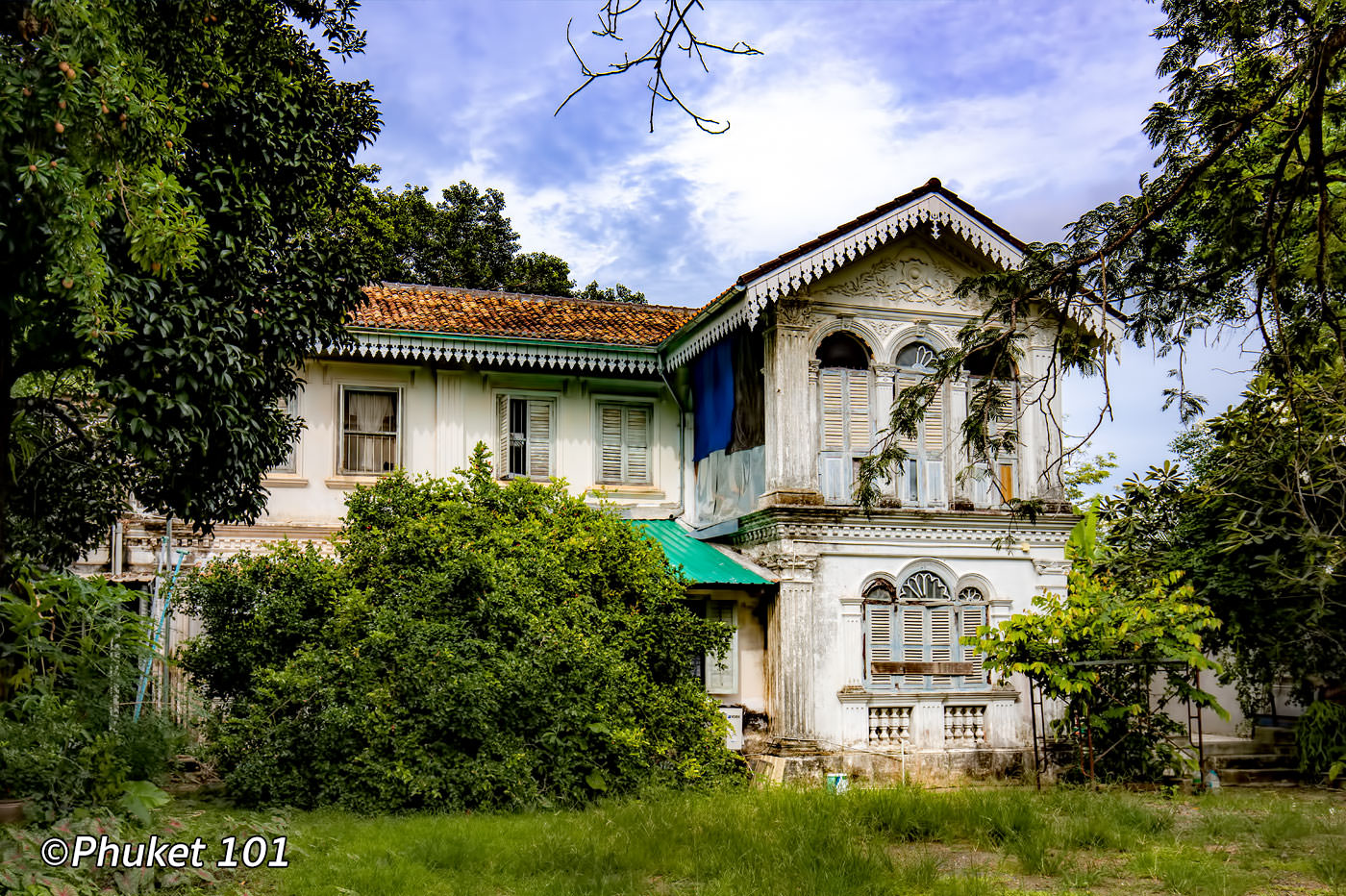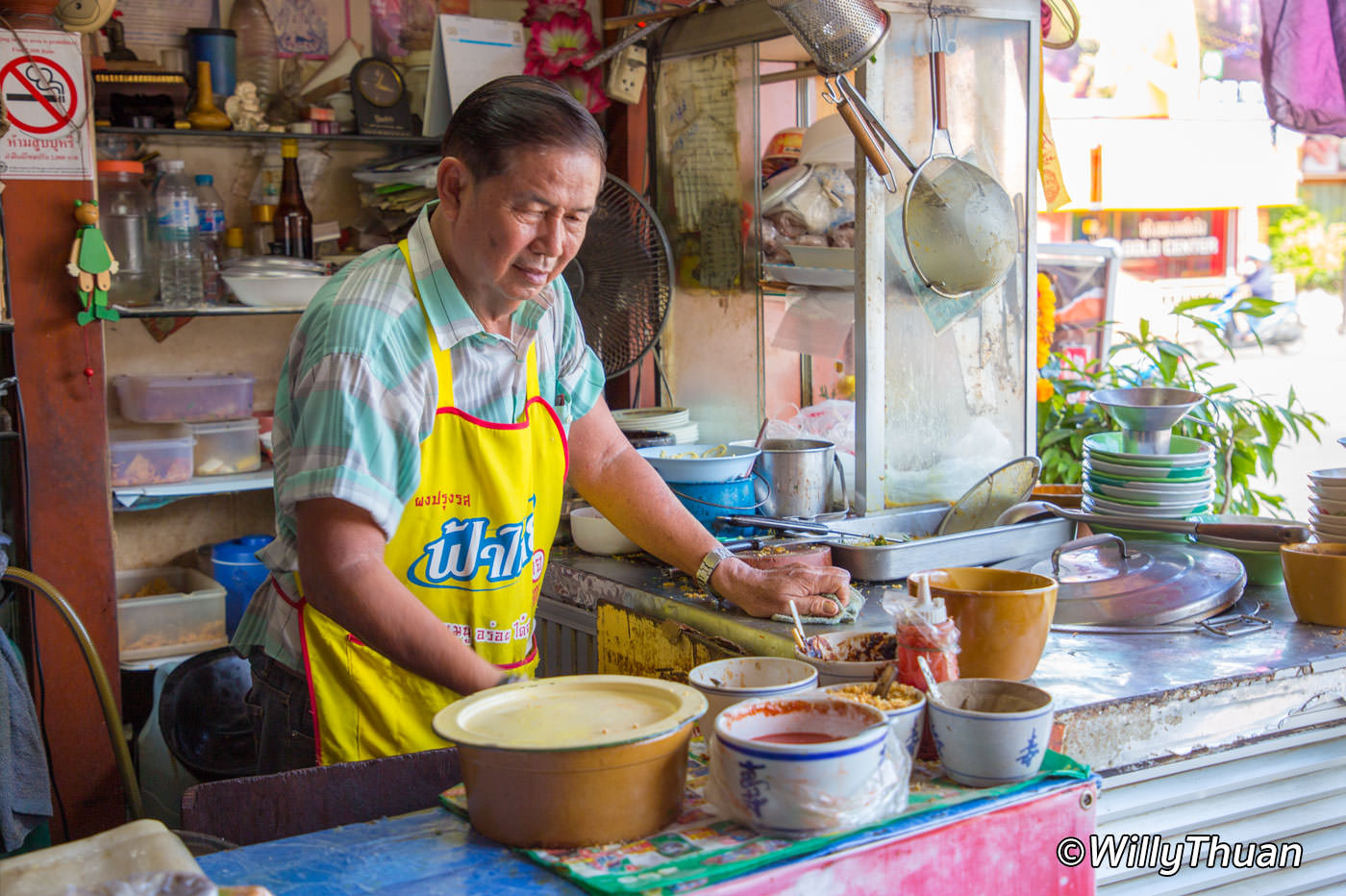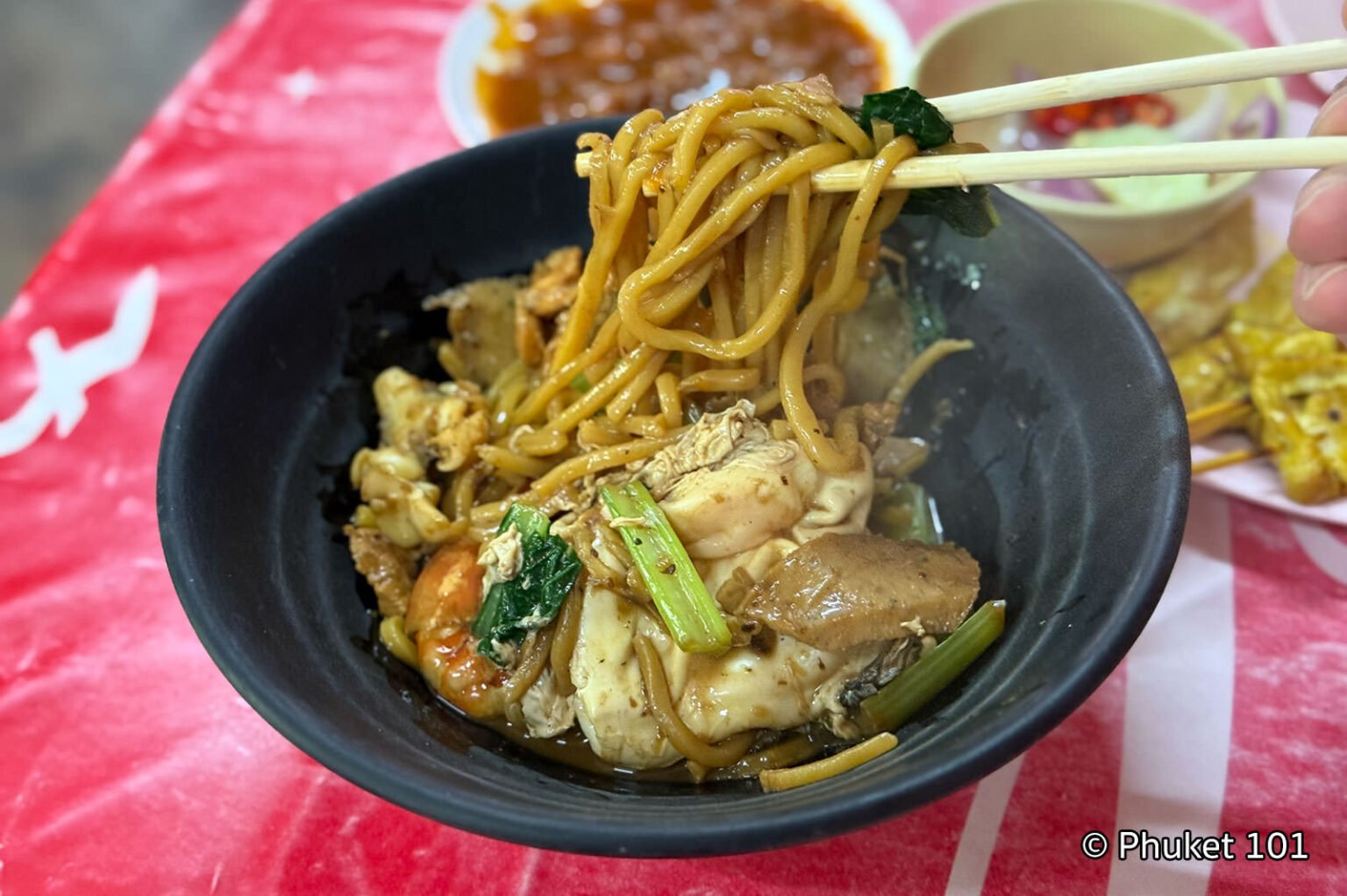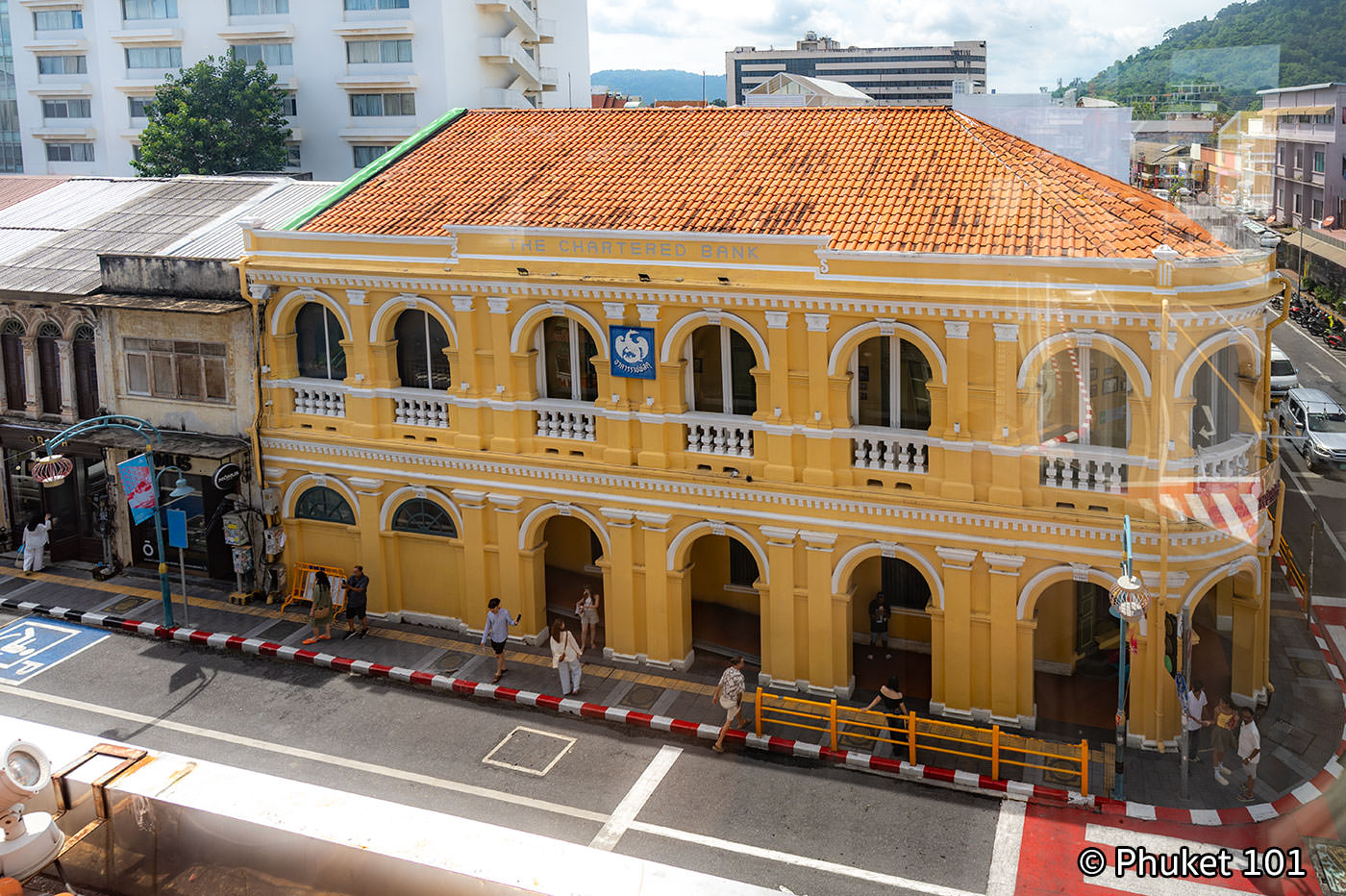What Is Peranakan (Baba–Nyonya) Culture in Phuket?
“Peranakan” refers to descendants of Chinese immigrants who settled in Southeast Asia—especially in Malaysia, Singapore, and southern Thailand, and married into local communities. The word itself comes from Malay, meaning “locally born” or “descendant.”
Over time, the Peranakan developed a unique culture that blends Chinese traditions with Malay, Thai, and sometimes European influences. This is seen in their language (Baba Malay), clothing, architecture, and food, often called Nyonya cuisine.
In Phuket, “Peranakan” is closely tied to the history of Chinese tin miners who arrived in the 19th century and married local Thai women, creating a distinct community that influenced the island’s architecture, festivals, and food.
What is Peranakan (Baba) Culture in Phuket?
Peranakan means “born here” in Malay, referring to descendants of immigrant Chinese or Indian men and local women across the Malay Peninsula and Southern Thailand; in Phuket, the community is commonly called Baba-Nyonyá. The culture shaped Old Town’s Sino‑Portuguese architecture, family houses, jewellery, costumes, festivals, and food, much of it tied to Phuket’s tin‑mining boom from the 19th to early 20th century.
Where to start in Old Phuket Town
Thalang Road, Soi Rommanee, Krabi Road, and Dibuk Road are the most photogenic for Sino‑Portuguese shophouses, narrow five‑foot ways, and easy café stops; the old quarter spans a compact area that’s simple to cover on foot.
Best Museums for Peranakan History
Museum Phuket (Peranakannitat)
This small city museum occupies two landmark buildings at Phuket and Phang Nga Roads: the former Standard Chartered Bank and the yellow clock‑tower police station from the early 1900s, with concise exhibits about Baba history and local heritage. Displays are modest, but the buildings and junctions help us understand Old Town’s layout and growth during the tin era.
Phuket Thai Hua Museum
Set in an early‑20th‑century Chinese school on Krabi Road, this museum explains Chinese migration, tin mining, and Phuket’s Baba families with room‑by‑room displays; past reports note paid entry and improved exhibits over time. It’s our top stop for context before visiting homes and streets nearby.
Peranakan Phuket Museum
18 km north of Phuket Town in Thalang, this dedicated museum covers origins, Sino‑colonial architecture, domestic interiors, clothing, food, and jewellery, with costume photos and short videos. It’s compact and easy to walk, and sits beside Yaya Kitchen and a café for a simple half‑day indoors.
Historic Homes and Mansions
Chinpracha House (Baan Chinpracha)

A privately owned Baba residence next to the governor’s mansion shows a lived‑in Peranakan interior; visitors report paid entry and a rare look at Phuket’s Chinese‑European domestic style. It’s small, so we pair it with the Thai Hua Museum on the same walk.
Phra Pitak Chinpracha Mansion (Blue Elephant)
This restored Sino‑Portuguese mansion on Krabi Road, long linked to the Chinpracha family, now hosts Blue Elephant; sources date its construction to the early 1900s, and it’s often cited as a textbook example of tin‑era wealth and architecture. Even without dining, we like a quick exterior look while walking between Krabi and Dibuk.
Route we recommend (half‑day)
- Start at Museum Phuket/Peranakannitat for a 20‑minute overview at the clock‑tower corner.
- Walk Thalang and Soi Rommanee for shophouses and five‑foot ways.
- Visit the Thai Hua Museum on Krabi Road for exhibits and building details.
- Continue to Chinpracha House and the Blue Elephant mansion area to see period homes up close.
If time allows, add the Peranakan Phuket Museum in Thalang for the dress, jewellery, and domestic rooms section, especially in hot weather when indoor stops help.
Architecture highlights to notice
Old Town’s “Sino‑Portuguese” or Chinese Baroque style mixes European layouts with Chinese decorative work; most buildings are shophouses with ground‑floor commerce and living quarters above. Ventilation courtyards (chîm jâe/sky‑light) are typical, channelling air and light into the middle of the house, a feature explained in local museum displays.
Food and everyday culture
Baba food blends Hokkien Chinese techniques with Malay and Southern Thai ingredients; museums in Phuket outline how spices, noodles, and home cooking reflect this mix. We tie food stops to the walking route, adding a simple Hokkien noodle lunch in Old Town after museums.
Ko Yoon Restaurant

Go La Hokkien Fried Noodles

Mee Ton Poe Hokkien Noodles in Phuket Town

Peranakan events
Phuket hosts two related Peranakan events in Old Town: the Phuket Baba Wedding Festival and the newer Phuket Peranakan Festival, both celebrating Baba–Nyonya heritage with traditional dress, music, food, and street parades.
Phuket Baba Wedding Festival (traditional ceremonies)
This long‑running event stages authentic Baba wedding rituals over 2–3 days, with tea ceremonies at historic mansions, a costumed parade through Old Town, group photos at Thai Hua Museum, and gala dinners at landmark homes such as the Governor’s Mansion (now Blue Elephant). Dates have varied by year (historically in June or mid‑year), with recent activity recorded in May 2025 for the 12th edition and earlier editions in June or August in the 2010s. It’s organised with support from local Peranakan groups and tourism bodies, and uses heritage venues like Hongyok/Hongsyok House and Thai Hua Museum.
Phuket Peranakan Festival (street parade and cultural shows)
Since 2023, Phuket has staged a broader Peranakan Festival with evening stage shows at the clock‑tower corner (Phuket Rd. x Phang Nga Rd.) and a large street parade through Old Town, drawing performers from Peranakan cities across Thailand and the Malay Peninsula. The 2024 edition ran June 21–23 with a major procession on June 22 at 17:00; guides indicate similar late‑June dates in 2025 (e.g., June 20–22) as a working expectation, but always check the official channels before planning.




